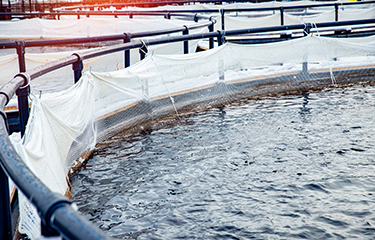A new project is aiming to accelerate innovation in the salmon aquaculture sector through introduction of novel feed ingredients.
The four-year, EUR 1.3 million (USD 1.5 million) Millennial Salmon Project is being led by Nofima, the Norwegian institute for applied fisheries, aquaculture, and food research, in partnership with value-chain stakeholders InnovaFeed, Corbion Algae Ingredients, Cargill, SINTEF Ocean, and retailer Auchan. Having cross-value-chain involvement will prove pivotal in ensuring the development of a next generation of farmed salmon that is more sustainably, produced, and distributed, and which is also able to meet the market demands of a fast-growing global population, according to Nofima Senior Scientist and Project Leader Katerina Kousoulaki.
Utilizing novel ingredients from the circular economy that have a low carbon footprint, the project is addressing calls from the United Nations' Food and Agriculture Organization (FAO) for the aquaculture industry to produce more food using fewer resources, and to emit lower carbon emissions while protecting biodiversity and the resilience of ecosystems, Nofima said.
Kousoulaki told SeafoodSource in order to maintain salmon product quality and continue to supply growing markets, the industry will need more protein and marine oils to continue to produce high-quality salmon diets.
“This will not be possible in a sustainable way relying on limited fisheries resources and currently-grown land crops such as soy. The millennial salmon will be a healthy, tasty, and good-looking product that we will eat with good conscience in the years to come,” she said. “Projects connecting global leading industrial stakeholders with research organizations that can remove remaining bottlenecks and fill knowledge-gaps – connecting at the same time the consumers – are important for salmon farming and aquaculture to take big steps and apply science and environmentally-sound practices with the necessary support of the market.”
The project will study two alternative feed ingredients: protein-rich, insect-based feed ProtiNova from InnovaFeed; and algae-based omega-3s, from AlgaPrime DHA, produced by Corbion. It will test the levels that are required to optimize the physical and nutritional needs of salmon, discover the practical and functional properties of both alternatives, and demonstrate the environmental and societal aspects of the suggested innovations. SINTEF Ocean will be conducting a life-cycle analysis of the resulting millennial salmon feed.
The intention is that by 2025, salmon farmers will have access to a solution that balances feed raw materials in a way that provides greater flexibility from the use of finite marine resources and land-demanding resources, Kousoulaki said.
The participants hope the resulting millennial salmon will be a healthier farmed animal – fed with and grown with higher levels of omega-3s derived from microalgae, Kousoulaki said.
The project will also include two cage trials. The first one, taking place in 2022, will target defining salmon’s eicosapentaenoic acid (EPA) need. EPA is very important for health and robustness of farmed fish against disease and inflammation, and the project is replacing fish oil in the diet with a DHA-rich algal oil that contains very little EPA in its present product form, she said.
The second cage trial, taking place during the last years of the project – 2023 to 2024 – targets the demonstration of feasibility for replacing high proportions of fishmeal and fish oil with insect meal and microalgal biomass, respectively in real farming conditions with the focus on fish health, welfare, performance, and environmental and economic viability.
Asked what led to the selection of ProtiNova and AlgaPrime for evaluation, Kousoulaki said the project leverages recent work toward enabling future sustainable salmon production growth.
“During the past years, we have performed comprehensive research using insect and, in particular, algal meal in diets for Atlantic salmon to enable the replacement of fishmeal and fish oil and to increase the levels of long chain polyunsaturated omega-3 fatty acids, creating safer salmon diets without compromising marine biodiversity,” she said. “The selected insect and algal meal ingredients are produced at large scale based on agricultural side-stream biomasses in a circular economy setting and can support our project goals regarding animal physiology, environment, and economics.”
Looking at millennial salmon from a consumer perspective, Kousoulaki said that when growing salmon with the project’s microalgal biomass species, it was consistently observed that the fillet pigmentation and texture were improved without changing the taste of the product. And by providing higher levels of DHA relative to EPA, salmon accumulates higher levels of these essential lipids in the fillet more efficiently, which will also contribute to a healthier product for the consumer, Kousoulaki said.
“New ingredients appear as an answer to evolving market needs that are driven by the consumers. Today’s salmon consumers are conscious of environmental issues and food security realities and make their choices based on their respective knowledge and beliefs,” she said. “Salmon farming’s existence in the future is dependent on a growing a market of consumers that faithfully choose salmon products.”







